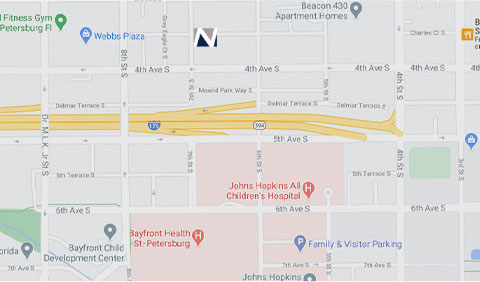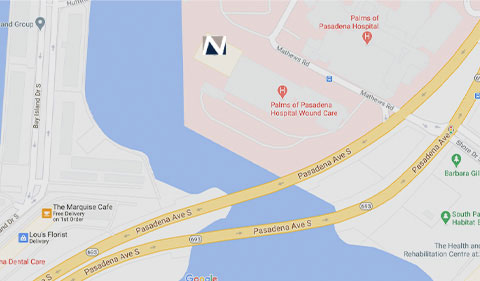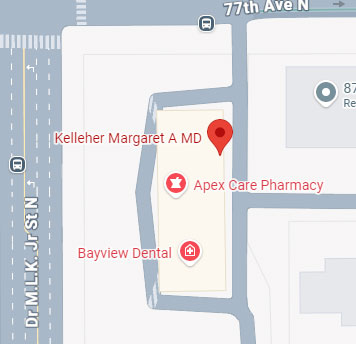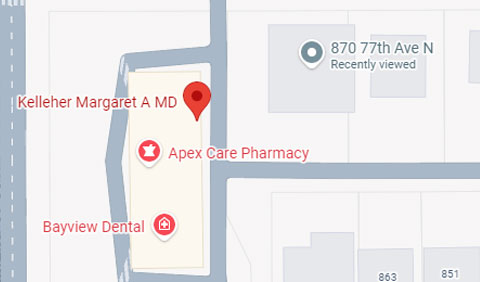Intense Pulsed Light (IPL)
Reduce Redness, Sun Damage, and More in St. Petersburg, St. Pete Beach, and Tampa Bay
Florida is known for its sunny days, which are good for outdoor activities and tourism, but bad for skin—especially if you don't properly protect yourself when you go out. Ultraviolet radiation causes a range of cosmetic problems, including brown discoloration, freckles, dilated blood vessels, facial redness, and other discolorations. In fact, the sun is responsible for most of the aging we see on our face. Fortunately, the physicians at Nelson Dermatology can use intense pulsed light (IPL) at their Tampa Bay practice to help reduce and reverse these changes, giving you a healthier, more beautiful, even skin tone.
There are many intense pulsed light devices available, but not all of these devices are equal. Nelson Dermatology uses InMode's Lumecca, which is one of the most powerful IPL options due to its revolutionary flash lamp. Because the Lumecca IPL can safely deliver more energy in more specific wavelengths, patients can achieve their desired cosmetic improvement after just one or two sessions, as opposed to the usual five or six treatments with other intense pulsed light devices.
Schedule your consultation for intense pulsed light in St. Petersburg or St. Pete Beach (South Pasadena). Call Nelson Dermatology at (727) 895-8131.
What Does Intense Pulsed Light Treat?
At Nelson Dermatology, intense pulsed light is used mostly to correct sun damage in the form of brown discolored areas and dilated, visible blood vessels.
Ultraviolet radiation causes the skin to react defensively, pushing melanocytes—the pigment-producing cells—to make more melanin. When this melanin is concentrated in small areas, the result is a visible spot. Different from moles and potentially cancerous lesions, these spots are benign and tend to appear on areas subjected to cumulative sun exposure, such as the face, backs of the hands, and upper chest. In warm and sunny areas—like Tampa Bay—these changes can occur quickly.
Light from the sun also causes collagen levels to drop in the skin, both by hastening the breakdown of existing collagen fibers and slowing the production of new collagen molecules in specialized cells known as fibroblasts. Reduced collagen makes the skin thinner, so blood vessels near the surface can more easily be seen. This also results in an overall red appearance of the face.
Among the other discolorations intense pulsed light can treat are rosacea and melasma. Rosacea is a chronic skin condition that causes persistent facial redness. Melasma takes the form of brown or gray patches on the face, typically associated with pregnancy or other hormonal changes.
Since intense pulsed light produces light at many wavelengths, it can be used to effectively address all of these conditions with a single treatment option.
Who Performs Intense Pulsed Light Treatments at Florida's Nelson Dermatology?
Our board-certified dermatologists are trained and experienced to help you achieve your cosmetic goals. Our physicians will take the time to examine your skin, discuss your goals, and design your treatments. And when it is time for your intense pulsed light (IPL) treatment to be performed, our board-certified dermatologists will be the ones treating you. That's right: No physician extenders or nurses performing your intense pulsed light treatment—just our specially trained physicians providing their experienced care.
What Can I Expect from an Intense Pulsed Light Session?
Because intense pulsed light is a powerful treatment, patients should expect to feel some mild heat in the targeted area during their session, as well as something like the sensation of a snapping rubber band against the skin. In order to help make the treatment more gentle, we will blow cold air over your skin to help cool and numb the surface. Most patients do not need any topical numbing or other intervention. Overall, intense pulsed light treatments are very well tolerated by our patients.
The duration of an intense pulsed light session depends on the size and number of areas being treated, with a typical treatment lasting between 20 and 30 minutes.
Skin treated with intense pulsed light will be slightly more sensitive in the following days, with redness and possible swelling—similar to what happens after a sunburn. Dark brown spots on the skin may darken and develop a superficial crusting that looks like tiny coffee grounds in the days after the treatment. It is very important to protect IPL-treated skin from sun exposure while it heals, as it is especially prone to burning and developing new pigmentation irregularities.
Within a few days to a week, the temporary changes resolve and the skin begins to remodel into its new, beautiful, even color. Brown skin lesions will begin to flake away, and visible vessels will start to fade in the days after an intense pulsed light session. The skin will continue to remodel and improve over the coming weeks. While many patients notice amazing results after their first IPL session, more than one treatment may be necessary in order to achieve your ideal results.
How Does Intense Pulsed Light Work?
There are many different light-based cosmetic rejuvenation options, with each working in different ways. Lasers, for example, focus a single wavelength into a beam useful for precise targeting of a single chromophore (colored target). But sun damage results in many different color irregularities in the skin, including light brown, dark brown, and red—all in the same skin areas. Intense pulsed light utilizes multiple wavelengths at the same time, targeting all of these different color irregularities at once. This makes it an ideal option to help restore and rejuvenate your sun-damaged skin.
When the light from an intense pulsed light treatment enters the skin, the energy targets darker-pigmented cells—such as melanin in sun spots and hemoglobin in red blood cells and blood vessels. These targets, known as chromophores, absorb the energy, which causes them to heat up far more than the surrounding cells. The heat grows in intensity until it damages the discolored areas, causing them to remodel.
For pigmented lesions, this damage leads to the body sloughing off the cells and an ultimately clearer complexion. For visible blood vessels, the intense pulsed light damage causes the vessels to close off from the circulatory system, wither, and ultimately be absorbed. The end result is more even, uniform skin, free from discolorations and sun damage.
Are There More Light-Based Treatments Available?
In addition to intense pulsed light, the Nelson Dermatology team uses many other laser and light-based devices, such as photodynamic therapy, pulsed dye lasers, and radiofrequency energy treatments to improve your skin and achieve your cosmetic goals.
The Nelson Dermatology team would love the opportunity to assess your skin, discuss your cosmetic goals, and design the perfect approach to help you achieve your ideal beauty. Talk to our team to discover more.
Schedule your consultation to discuss intense pulsed light cost, effects, and other details in St. Petersburg or St. Pete Beach (South Pasadena). Call Nelson Dermatology at (727) 895-8131.








